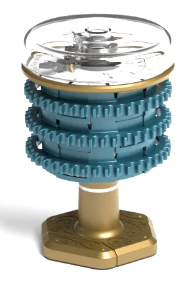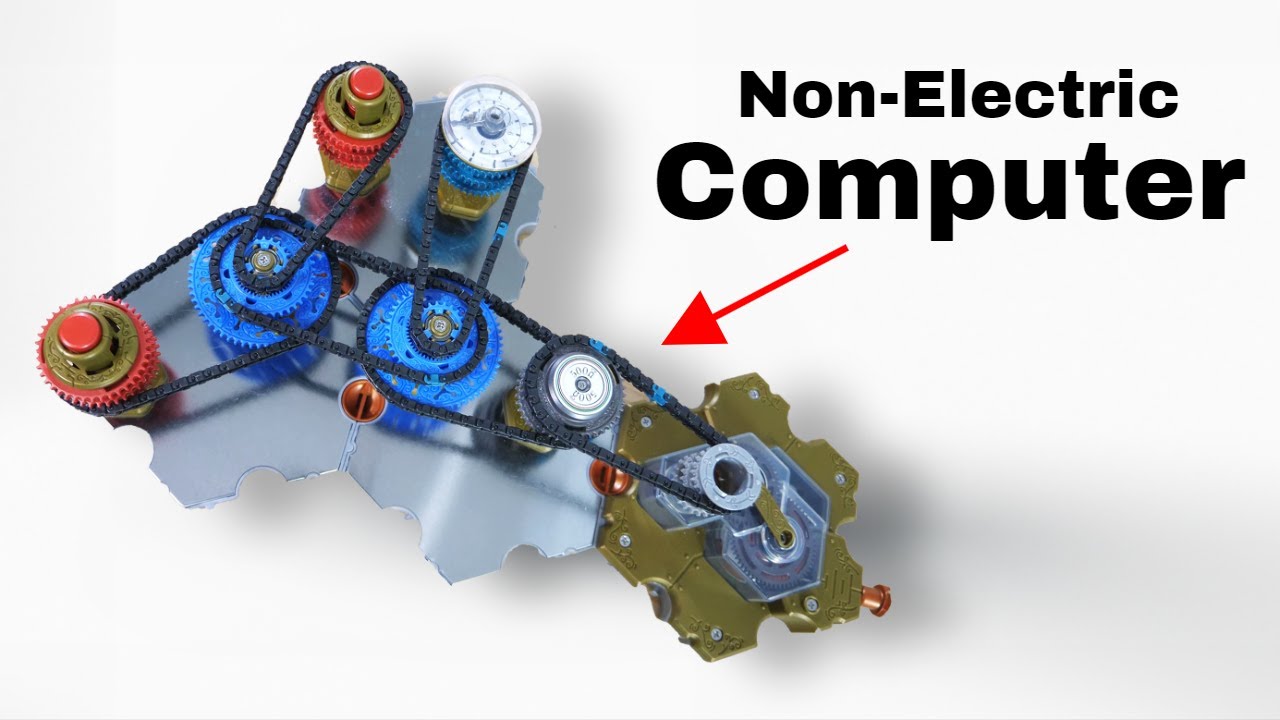Spintronics, from Upper Story, is an educational building block set which allows construction of mechanical analogues to electrical circuits in which chains serve as wires and cleverly designed components act as resistors, capacitors, inductors, diodes, transistors, switches, and other devices. Not only can the basics of Ohm’s law, reactive circuits, and switching be demonstrated, it is even possible to construct logic gates. Here is the Spintronics catalogue.
The choice of “spintronics” as a name is unfortunate, as it invites confusion with the previously existing field of spintronics, the development of electron devices whose operation depends upon exploiting the intrinsic spin and magnetic moment of the electron as well as its charge. Read heads of hard disc drives that use the giant magnetoresistance effect are examples of this kind of spintronic device, for which the 2007 Nobel Prize in Physics was awarded.
4 Likes
I wish this had been available when I first learned about circuits. I might still remember some of it today (I remember only the very rudiments).
1 Like
I was going to recommend this for homeschoolers but I wanted to see an LRC circuit and I couldn’t figure out how this kit would permit it since the C(apacitor) is manually controlled rather than being a spring-loaded gear to store potential energy from the moving chain.
1 Like
This description of the capacitor says:
Spintronic capacitors store energy. They also double as a spintronic voltmeter: The gauge on top indicates the spin voltage across it from -9 to +9 spin volts.
These spintronic capacitors have a fixed value of 1.2 mF. The capacitors use a torsion spring to store energy and exhibit low hysteresis. These capacitors are rated for a maximum of +/- 9 spin volts.

There is a browser-based Spintronics Simulator which lets you build with all of the components. One of the example circuits is a sinusoidal oscillator built with two capacitors, one inductor, one resistor, and one transistor. They also show a three transistor ring oscillator.
4 Likes
Excellent! Moreover, the simulator is a great option for homeschoolers that may not be able to afford the capital and maintenance costs of the mechanical kit.
3 Likes
We recommend the simulator for intermediate and advanced spintronic circuit builders. Unless you have physically used the parts and built an intuition for spintronic circuits, it can be difficult to interpret what’s happening on the screen.
Just quickly looking at the spintronic simulator, I would agree with their recommendation.
3 Likes
If there is an instructor who plows through the learning curve and the homeschoolers are tight on funds (as the government wants them, hence as most are) the instructor may be able to guide the students (especially if they are the children of an intelligent instructor at home) through the learning curve. This is particularly true as it “plays” rather like a video game.
2 Likes
Another simulator that I recommend is Falstad:
https://www.falstad.com/circuit/
2 Likes

